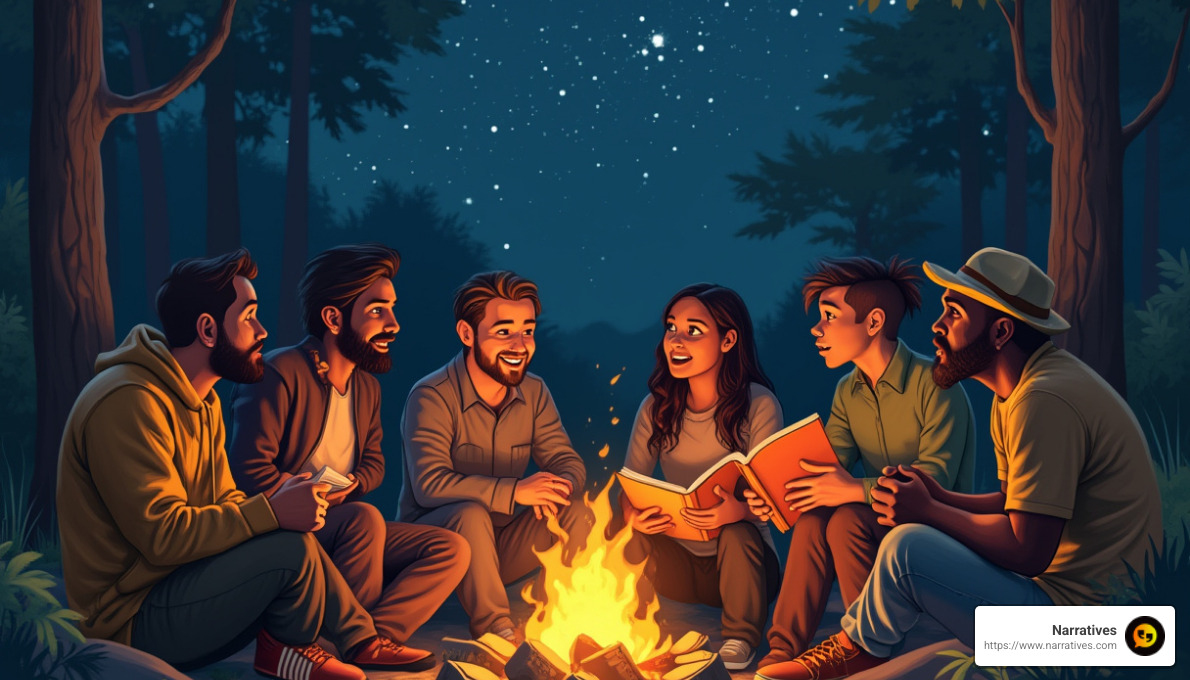Storytelling as a Catalyst for Social Justice
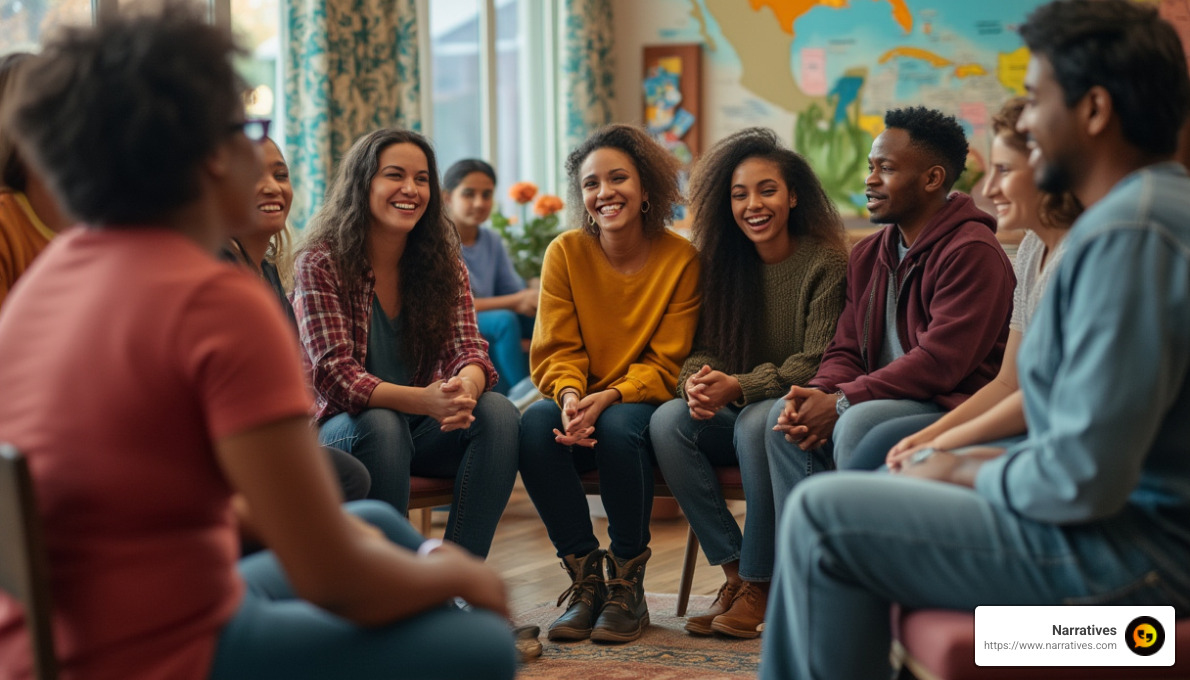
Storytelling and social justice are intrinsically linked, offering a powerful vehicle for change. At its core, storytelling is an age-old tool that engages emotions and shapes perspectives. This transformative medium can illuminate inequalities and injustices, promoting empathy and action toward social justice. Storytelling has the potential to:
Raise Awareness: Amplifies marginalized voices and uncovers hidden truths.
Create Community: Builds bridges between diverse groups by fostering understanding and compassion.
Drive Change: Inspires action and policy shifts by highlighting human experiences behind data and statistics.
Storytelling has evolved into digital storytelling, using multimedia elements to engage audiences more effectively. By combining text, images, and sounds, digital storytelling reaches wide audiences, making social justice stories more impactful and accessible.
Organizations focused on social impact leverage storytelling to resonate with their audiences, helping create a dialogue around critical issues while driving tangible outcomes like awareness and community growth. As explored in Lee Anne Bell's Storytelling for Social Justice, narratives are crucial to teaching and learning about social justice, offering strategies to develop critical understanding and dialogue.
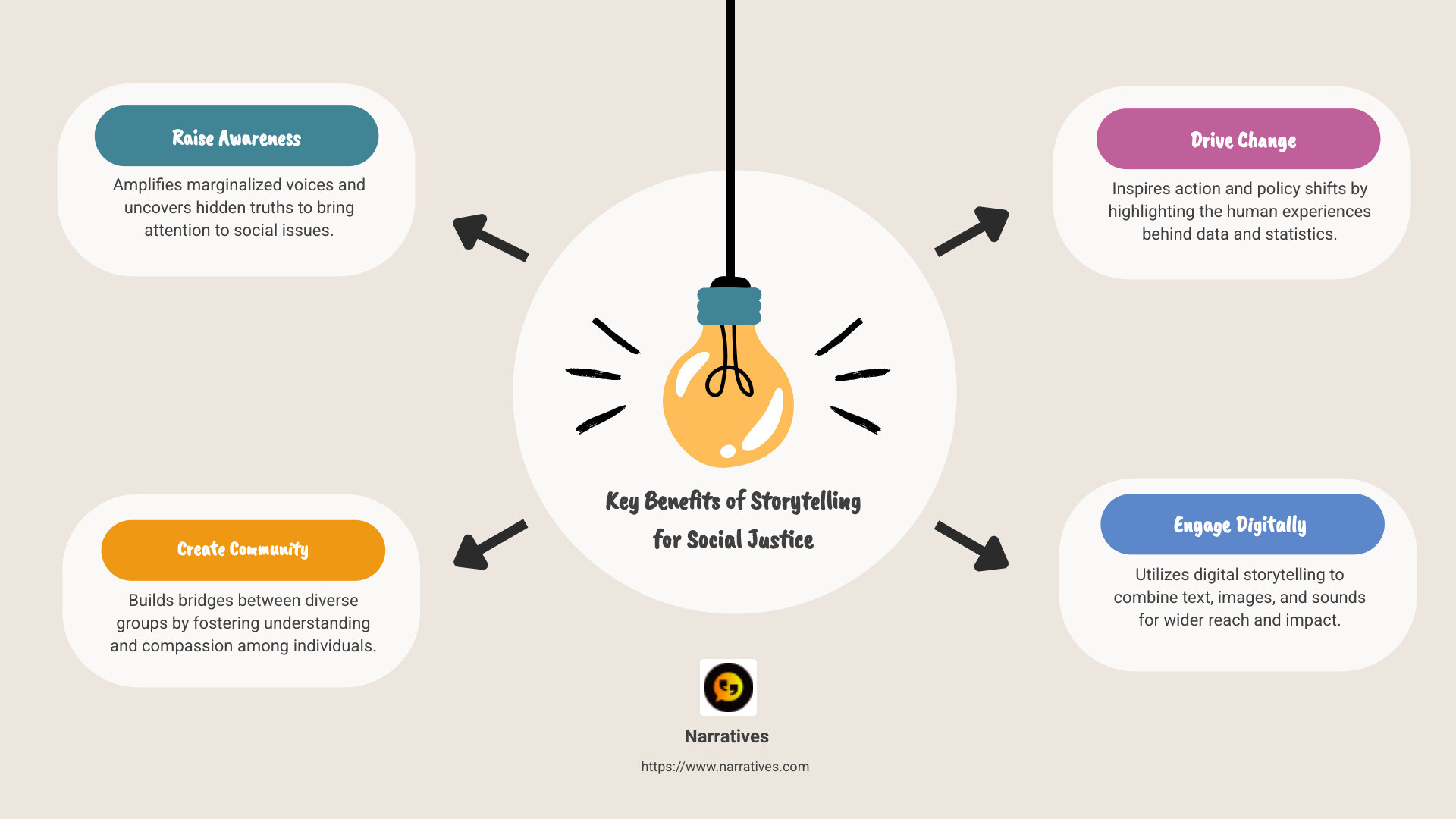
The Power of Storytelling in Social Justice
Storytelling has a unique power to inspire and drive social movements. At its heart, a story connects with people on a deep, emotional level, reaching parts of the brain that facts and figures alone can't touch.
Inspiration
Stories have the ability to spark change. They inspire by showing real-life examples and personal experiences. For instance, the Black Lives Matter movement gained momentum as stories of individual experiences with racial injustice were shared widely. These narratives helped people understand the urgency and depth of the issues, inspiring many to join the cause.
Social Movements
Social movements thrive on storytelling. Stories provide a human face to abstract issues, making them relatable and urgent. Whether it's climate justice, gender equality, or racial equity, movements have harnessed storytelling to rally support and drive action. By sharing individual stories, movements can build a collective narrative that highlights systemic issues and calls for change.
Neural Pathways
The science behind storytelling is fascinating. When you hear a story, your brain releases chemicals like dopamine and oxytocin, which improve memory and empathy. This means stories are not just heard; they are felt. They create neural pathways that make us more likely to remember and act on what we've learned.
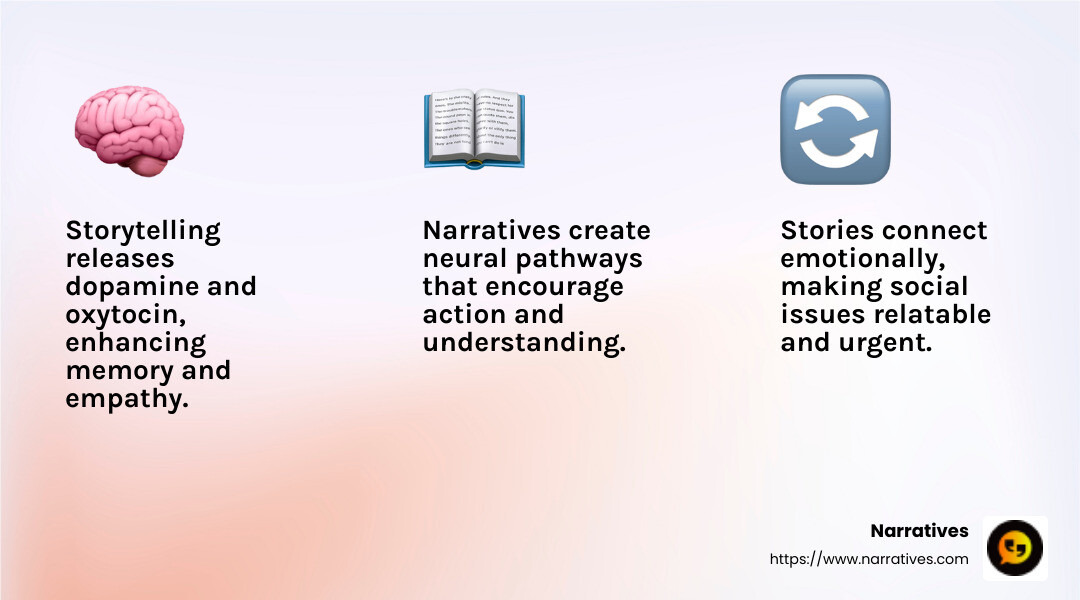
This biological response is why storytelling is such a powerful tool for social justice. It can change perceptions and motivate people to join social causes by making them feel connected to the issues.
By using storytelling effectively, social justice advocates can inspire change, fuel movements, and engage audiences on a deeper level. It's not just about telling stories; it's about creating powerful narratives that resonate and drive action.
Storytelling and Social Justice: A Symbiotic Relationship
Storytelling and social justice are deeply interconnected. Together, they create a powerful tool for addressing issues like racism, inequality, and injustice. Let's explore how this relationship works through a theoretical framework and practical guide.
Theoretical Framework
At its core, storytelling in social justice serves as a theoretical framework for understanding and challenging societal norms. According to Lee Anne Bell's book, Storytelling for Social Justice, stories help us make sense of racial constructions and the everyday language and images that perpetuate them. By dissecting these narratives, we can better understand how racism operates both culturally and institutionally.
Counter-storytelling is a key concept here. It involves using stories to challenge dominant narratives and highlight marginalized voices. For instance, Bell's work emphasizes creating counter-storytelling communities that foster critical dialogue about racism. These communities don't just tell stories; they deconstruct harmful stereotypes and offer new perspectives.
Practical Guide
In practice, storytelling offers a practical guide for educators, activists, and anyone seeking social change. Bell's book provides strategies for using storytelling to initiate conversations about race and injustice. It includes examples from high school classrooms and teacher education programs, showcasing how storytelling can be integrated into educational settings to address difficult topics.
A practical guide to storytelling for social justice also involves understanding the ethics of storytelling. It's crucial to gather stories ethically, ensuring that the voices of those most affected by injustice are amplified authentically and respectfully.
Addressing Racism
Storytelling is a powerful tool in the fight against racism. By sharing personal stories of racial injustice, individuals can highlight systemic issues and humanize the abstract. This approach not only raises awareness but also encourages empathy and action.
For example, the Get Schooled podcast lifts student voices on issues like racial justice and education policy. By providing a platform for those directly affected, the podcast helps listeners understand the real-world impact of policies and practices.
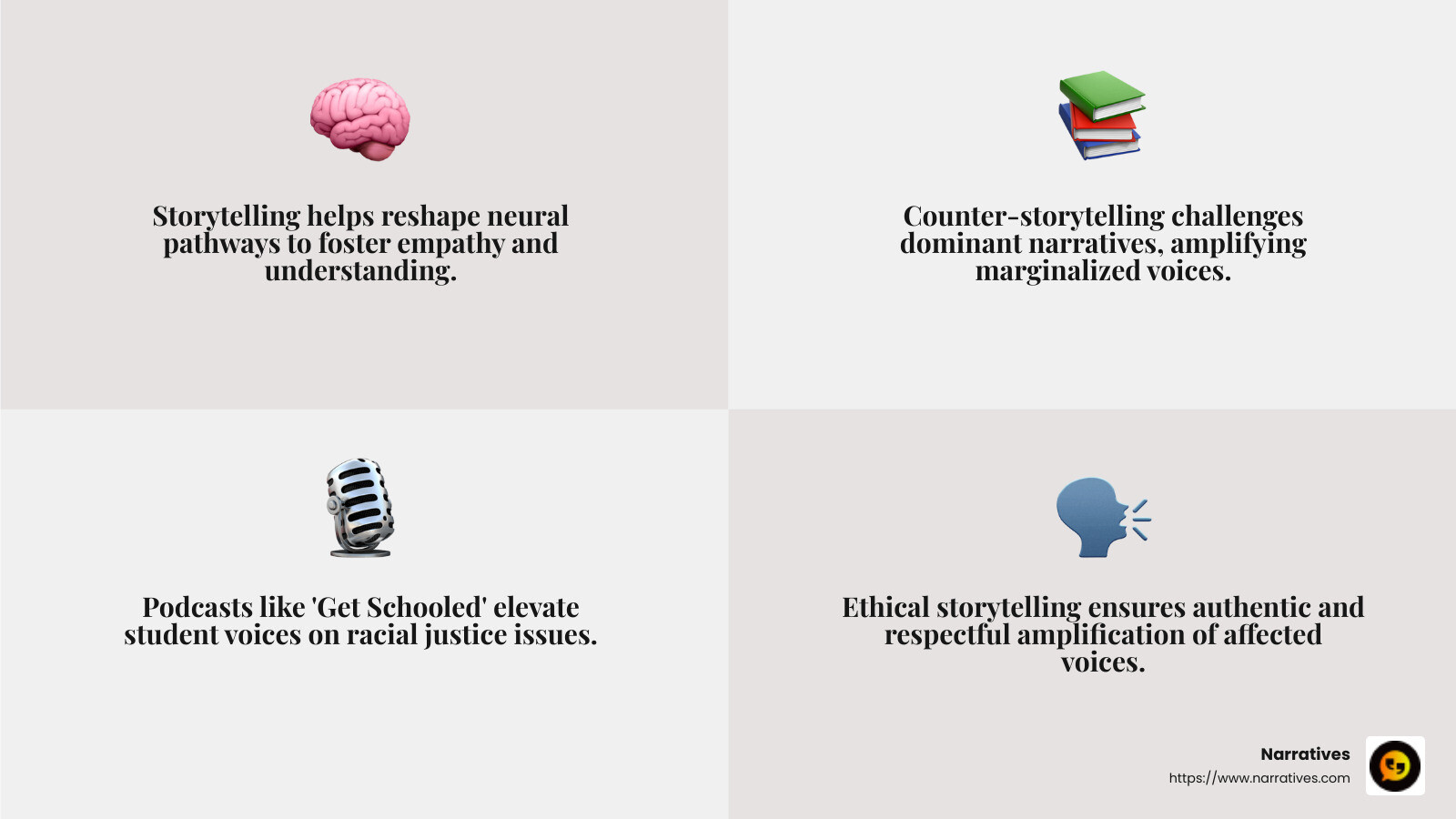
In summary, storytelling and social justice are mutually reinforcing. Together, they provide a framework for understanding and addressing complex issues like racism. By combining theory with practice, storytelling can drive meaningful change and foster a more just society.
Best Practices for Social Justice Storytelling
Storytelling is a powerful tool for social justice, but using it effectively requires understanding the different forms it can take: oral, sonic, visual, and written. Each form offers unique ways to engage audiences and drive change.
Oral Storytelling
Oral storytelling is one of the oldest forms of communication. It involves sharing stories through spoken word, fostering a deep connection between the storyteller and the audience. This method is particularly effective in community settings, where personal interactions can build trust and inspire action.
Example: The Theatre of the Oppressed uses oral storytelling to engage communities in dialogue about social issues. By acting out stories of oppression, participants can explore solutions and empower themselves to create change.
Sonic Storytelling
Sonic storytelling includes podcasts and audio recordings, which can reach wide audiences. It allows for the inclusion of tone, emotion, and background sounds, adding depth to the narrative.
Example: The Get Schooled podcast lifts student voices, allowing them to share their experiences with racial injustice. This format helps listeners connect emotionally with the stories, fostering empathy and understanding.
Visual Storytelling
Visual storytelling uses images, videos, and graphics to convey messages. It's a compelling way to capture attention and illustrate complex issues quickly.
Example: The Witness program, supported by the Overbrook Foundation, uses video storytelling to document human rights abuses. These visual stories raise awareness and encourage viewers to take action.
Written Storytelling
Written storytelling involves articles, essays, and books. It allows for detailed exploration of topics and can reach diverse audiences through various platforms.
Example: Lee Anne Bell's Storytelling for Social Justice uses written narratives to dissect racial constructions and challenge societal norms. Her work provides a framework for educators and activists to incorporate storytelling into their efforts for change.
Integrating Different Forms
For the most impact, social justice initiatives can integrate multiple storytelling forms. Combining oral, sonic, visual, and written elements allows for a richer, more engaging experience.
Case Study: The Neighborhood Story Project uses a mix of storytelling methods to highlight community voices. By blending interviews, photographs, and written narratives, they paint a comprehensive picture of local issues.
Incorporating these best practices in social justice storytelling ensures that stories are not only heard but also felt, driving meaningful change in communities.
Storytelling for Social Impact
Storytelling is a catalyst for social impact, offering a transformative way to engage communities and drive social change. When stories are shared, they have the power to influence attitudes, inspire action, and create lasting change in society.
Social Change Through Storytelling
Stories have the unique ability to illuminate social issues and spark change. They can reveal hidden truths and challenge the status quo, encouraging audiences to rethink their perspectives and take action.
Example: The Black Lives Matter movement uses personal stories to highlight the realities of racial injustice. These stories, shared across various platforms, have mobilized people worldwide to demand equity and reform.
Community-Driven Storytelling
Community-driven storytelling empowers individuals to share their own experiences and narratives. This approach not only amplifies marginalized voices but also fosters a sense of ownership and agency within communities.
Case Study: The Neighborhood Story Project exemplifies community-driven storytelling. By collecting and sharing stories from local residents, the project highlights the unique challenges and strengths of their community, driving awareness and action.
Social Impact of Storytelling
The impact of storytelling extends beyond raising awareness. It can lead to tangible social changes, such as policy reforms, cultural shifts, and increased community engagement.
Example: The Voice of Witness initiative uses storytelling to document human rights abuses. By sharing these stories, they have influenced public opinion and prompted policy changes, demonstrating the power of storytelling to effect real-world impact.
The Role of Nonprofits
Nonprofits play a crucial role in leveraging storytelling for social impact. By partnering with storytellers and using various media, they can amplify important issues and drive collective action.
Example: The Health Media Initiative by the Open Society Foundations uses storytelling to promote health equity. By sharing stories of individuals affected by health disparities, they raise awareness and advocate for systemic change.
Incorporating storytelling into social impact efforts ensures that messages resonate on a personal level, inspiring individuals and communities to work towards a more just and equitable world.
Frequently Asked Questions about Storytelling and Social Justice
How does storytelling contribute to social justice?
Storytelling is a powerful tool for social justice because it makes issues personal and relatable. It bridges the gap between statistics and human experience.
When people hear real stories, they connect emotionally. This emotional connection can lead to empathy and understanding, prompting individuals to take action. For example, when stories about challenges faced by marginalized communities are shared, they can highlight systemic issues that data alone might not capture.
Statistics + Stories = Impact: Data can show the scale of a problem, but stories bring it to life. This combination can be a catalyst for change, driving policy reforms and social movements.
What are some examples of storytelling in social justice movements?
There are countless examples of storytelling playing a pivotal role in social justice movements:
Black Lives Matter: This movement has used personal stories to shine a light on racial injustices. By sharing experiences of those affected by police violence, the movement has galvanized global support and action.
Voice of Witness: This initiative documents human rights abuses through personal narratives. These stories have not only raised awareness but have also influenced public opinion and policy changes.
Theatre of the Oppressed: This method uses interactive theater as a form of storytelling to explore social issues. Participants engage in dialogues about oppression and envision different outcomes, fostering a deeper understanding and commitment to change.
Why is storytelling important for non-profits?
For non-profits, storytelling is essential in communicating their mission and impact. Here’s why:
Engagement: Stories captivate audiences more than facts alone. They make the cause relatable and inspire donors and volunteers to get involved.
Awareness: By sharing stories of those they serve, non-profits can highlight the urgency and importance of their work. This can lead to increased support and funding.
Advocacy: Stories can be a powerful advocacy tool, influencing policymakers and the general public. They can spotlight issues that need attention and drive collective action.
Example: The Health Media Initiative by the Open Society Foundations uses storytelling to promote health equity. By sharing stories of people facing health disparities, they advocate for systemic change and raise awareness about health issues.
Storytelling helps non-profits convey their message in a way that resonates, ensuring their efforts lead to meaningful and lasting social change.
Conclusion
In the field of social justice, storytelling is not just a tool—it's a catalyst for change. At Narratives, we understand the immense potential of stories to drive change, and we are committed to partnering with non-profits to amplify their voices.
Narratives focuses on elevating underrepresented voices through emotionally resonant multimedia content. Our aim is to help non-profits share their impact stories in a way that inspires action, builds trust, and increases visibility. By doing so, we empower organizations to connect with their communities on a deeper level.
Non-Profit Partnerships
Non-profits have unique stories that deserve to be heard. Our partnerships are designed to help these organizations harness the power of storytelling to showcase their mission and impact. Through high-quality video and multimedia content, we help non-profits articulate their narratives in a compelling way that engages donors, volunteers, and policymakers.
Example: The Voice of Witness initiative, which documents human rights abuses through personal narratives, exemplifies how storytelling can influence public opinion and policy changes.
Community-Driven Storytelling
We believe in the power of community-driven storytelling. By involving communities in the storytelling process, we ensure that the narratives are authentic and representative of those they aim to serve. This approach not only highlights the issues faced by communities but also celebrates their resilience and strength.
Example: The Neighborhood Story Project, supported by private funders, is a testament to how local stories can foster community engagement and drive social change.
In conclusion, storytelling is essential for social justice. It bridges the gap between data and human experience, making issues personal and relatable. At Narratives, we are dedicated to being the go-to digital storytelling partner for non-profits, helping them to share their stories in a way that resonates and leads to meaningful change.
For more information on how Narratives can help your organization harness the power of storytelling, learn more about our services.
